In arguably the most hotly anticipated Andalusian derby in history, Real Betis and Sevilla met at the Estadio Benito Villamarín this past Sunday. A 5-3 away win for Betis at the Ramón Sánchez Pizjuán in last season’s derby shocked La Liga and bolstered the reputation of the Seville derby globally. Though it’s been known throughout Spain for some time, many football fans are only learning recently how intense El Gran Derbi really is.
Real Betis have been rightly lauded for their style of play since the arrival of head coach Quique Setién who led them to 6th in La Liga last season but have begun this season slowly with a loss and a draw. Sevilla had a disappointing end to last season, finishing 7th and losing the Copa Del Rey final and brought in new head coach Pablo Machín this summer. Both headed into this game with wrongs to right as the world anticipated another derby classic. We take a look at the events that unfolded in the Benito Villamarín.
Build-Up Play
With both sides setup in fluid 3-4-3 systems, Betis and Sevilla somewhat cancelled each other out in the early stages. Quique Setién and Pablo Machín both demand that their team look to play out from the back and initiate patient build-ups. But both sides also looked to stop the other playing out from the back comfortably. Betis did so by marking man-to-man and pressing the ball carrier aggressively, Sevilla by pushing their forwards and midfield high and cutting off forward passing lanes. Sevilla’s press was the slightly less aggressive of the two and therefore the Real Betis back 3 had much of the first half possession. Sevilla’s front 3 and midfield pushed up high in an attempt to counter Betis’s known competence for playing out from the back and through the opposition press.
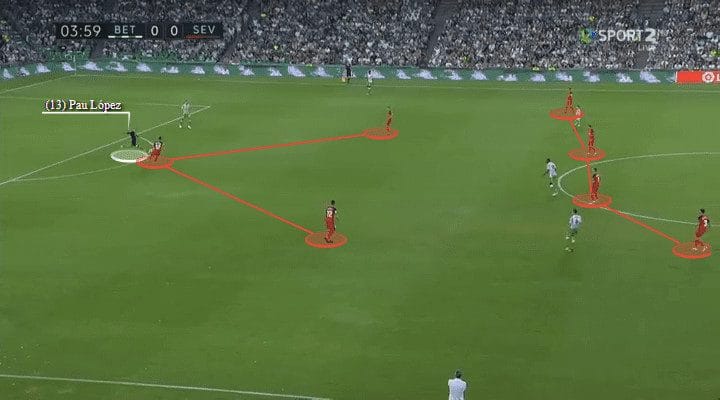
But this left a large unoccupied area of space between the Sevillistas’ midfield and back 3 and it didn’t take Los Verdiblancos long to take advantage of it. Béticos looked to exploit the gap in the Sevilla structure and played the ball long to their front 3, particularly targeting the tallest of them, Loren Morón. Morón was marked tightly by Sevilla’s Danish centre-back Simon Kjær and the two had an intense physical battle throughout the night.
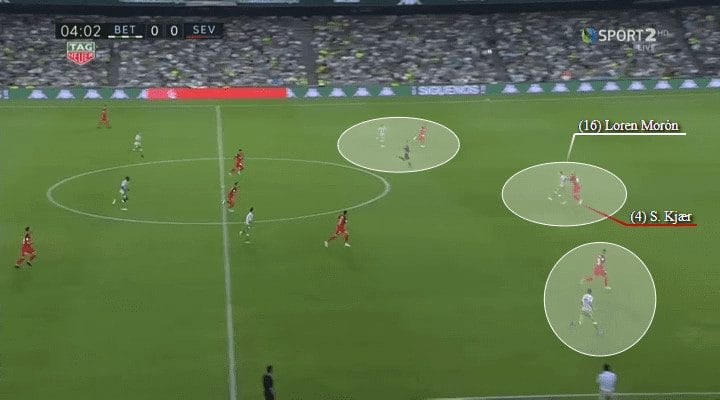
To avoid the constant threat of 3v3 situations in their own half, Sevilla made alterations to their press as the game wore on. Éver Banega began to sit a little deeper to close off the space between the Sevilla midfield and back 3. The high press became less aggressive as the Sevilla players looked to cut-off passing lanes instead.
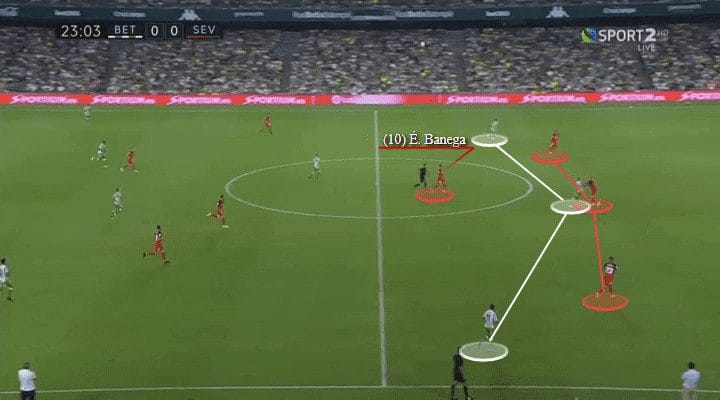
Given Betis’s patience against this kind of defensive block, Setien’s men were able to push Sevilla back into their own half a little more frequently and allow their forwards and midfielders to move more freely, creating havoc for the Sevilla defence. The Betis system relied heavily on their right flank. Cristian Tello played as the right-wing-back and stayed in space on the right wing during the build-up while Sergio Canales had most licence of the front 3 to move freely between the lines. Canales is a clever off-ball mover and almost put his side ahead in the first half after a brilliantly timed run and finish, only to be contentiously ruled offside.
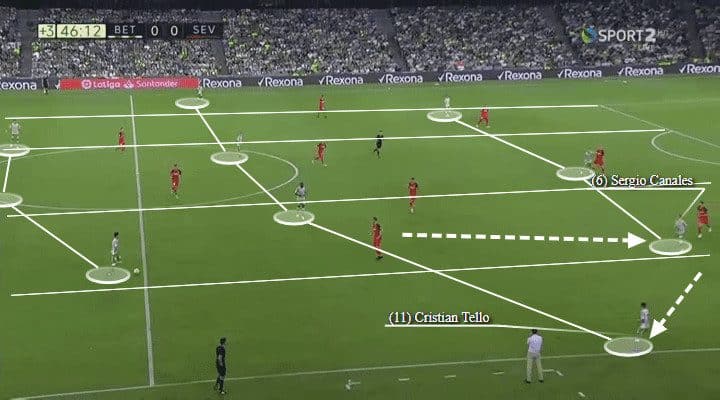
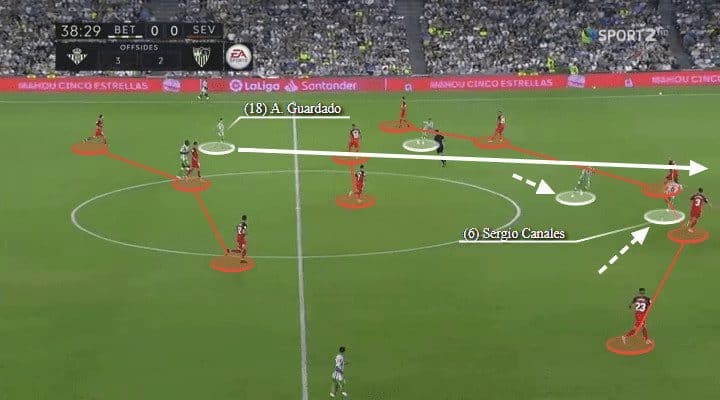
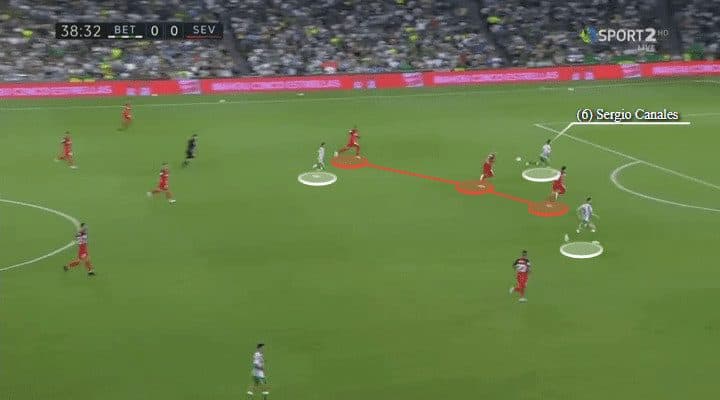
Betis’ aggressive high press put Sevilla under intense pressure and Pablo Machín’s side found it difficult to play out from deep in the early knockings of the game. Like Betis they attempted to go over the press and play direct passes into the front 3 but none of them possess the physicality of a Loren Morón.
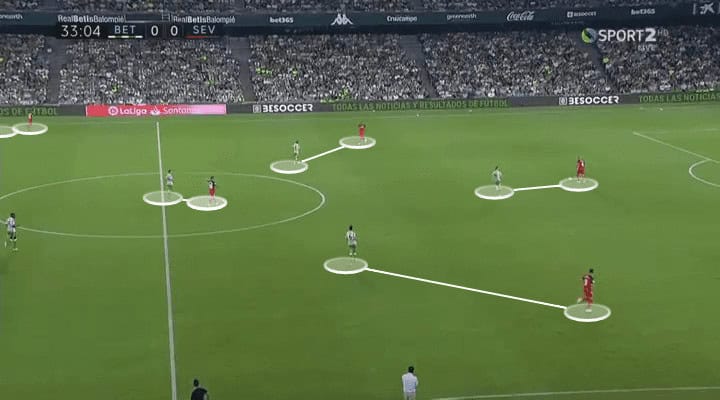
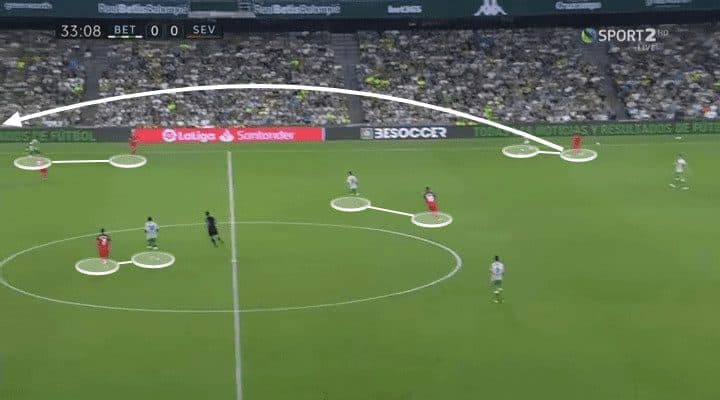
Transitions
So, having less luck than their opponents in playing long over the press, Sevilla had to find another way. With a midfield boasting Roque Mesa and Éver Banega, Sevilla looked to get their two midfield players on the ball in transitions from defence to attack. Quick combinations were made to play around the Betis press.
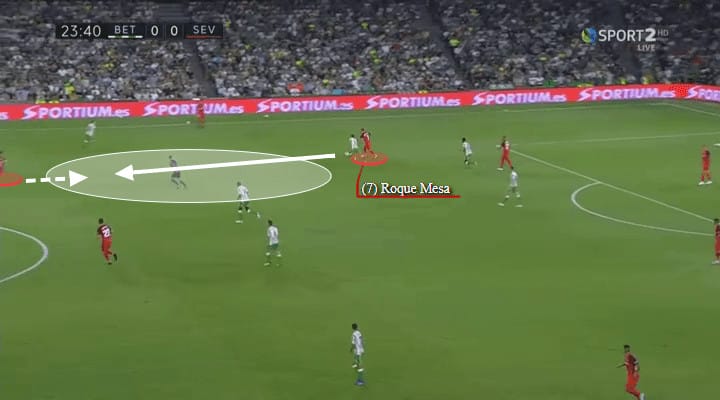
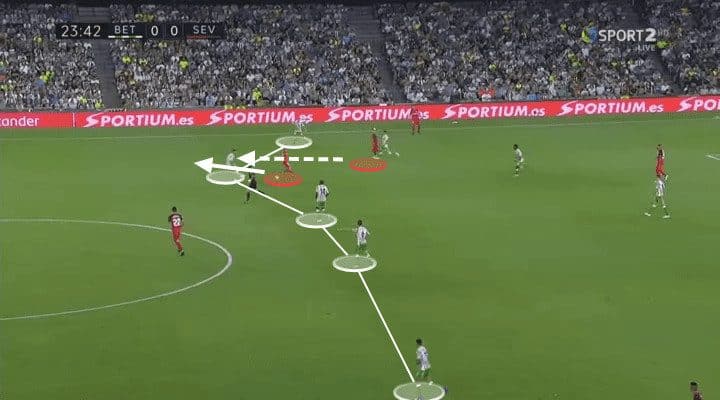
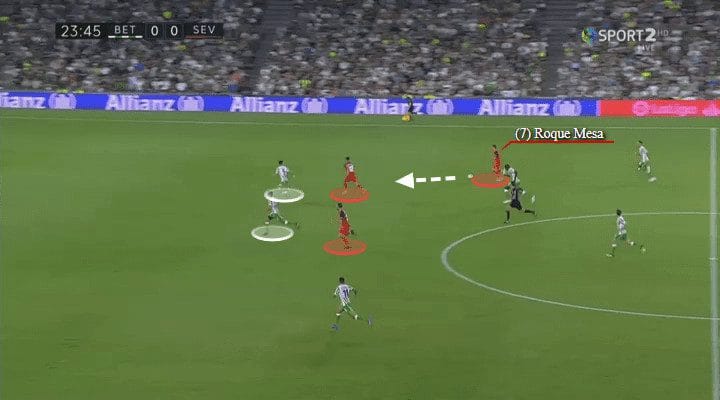
But while playing around the Betis high press was one thing, playing through their backline would prove to be trickier. The Betis back 3 was marshalled by La Masia graduate Marc Bartra, still relatively new to Betis after a January move. Bartra acted as a sweeper, playing centrally and sitting deeper than his fellow centre-backs. As soon as Betis made it through the Betis midfield, Bartra would step forward and initiate an offside trap. This caught Sevilla forwards offside often as they looked to make quick forward runs in transition.
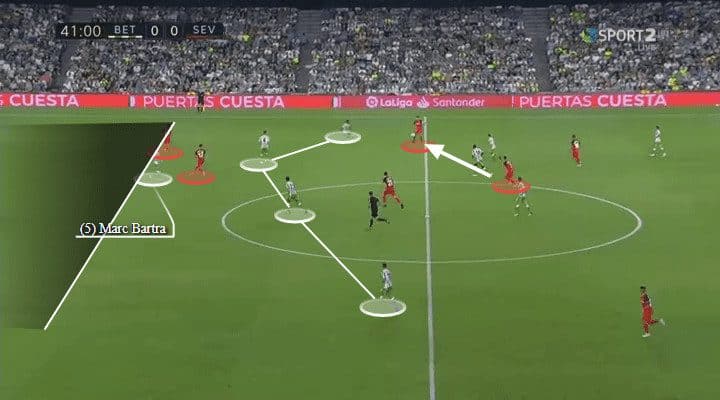
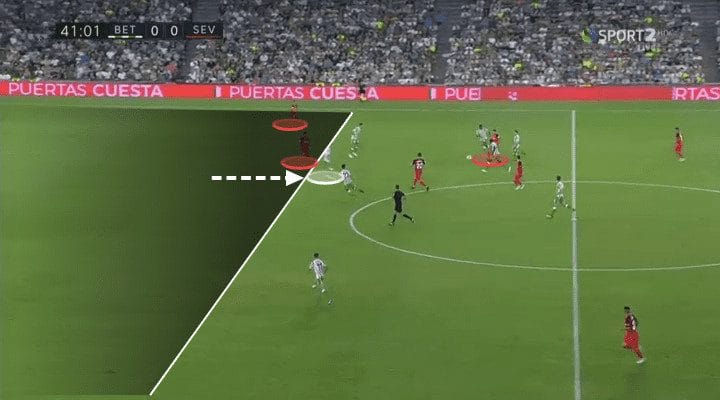
Change of Approach
The game carried on in the second half as it had in the first, Real Betis looking the slightly better of the two sides but with very few clear-cut chances to show for it. Sevilla’s approach was thwarted thus far and they seemed to be running out of ideas. The city of Seville is known for its overtly passionate people and it showed in the players throughout the match with a few tenacious tackles well handled by the referee. But when Sevilla looked stifled by their opponent’s in the second half, tempers rose a little higher and in the 66th minute, the game was changed drastically by one decision. Roque Mesa was sent off with a second yellow for challenging the goalkeeper when the latter held the ball. The decision was certainly debatable but what wasn’t was the certainty of the home fans as to what they wanted to see next. Joaquín.
The 37-year-old is the ultimate cult hero at Betis as well as being an experienced attacking midfielder who has delivered consistently over his time in La Liga. Setién did not disappoint his home faithful and Joaquín replaced William Carvalho in the 75th minute to a fervent roar. With Sevilla now down to 10 men, Betis could now patiently build their attacks and push Sevilla back into their own third of the pitch instead of playing over a high press. Neither Betis nor that man Joaquín needed long to take advantage of the situation.
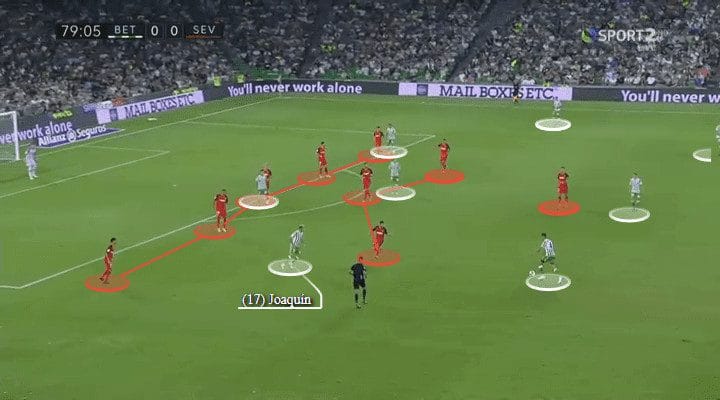
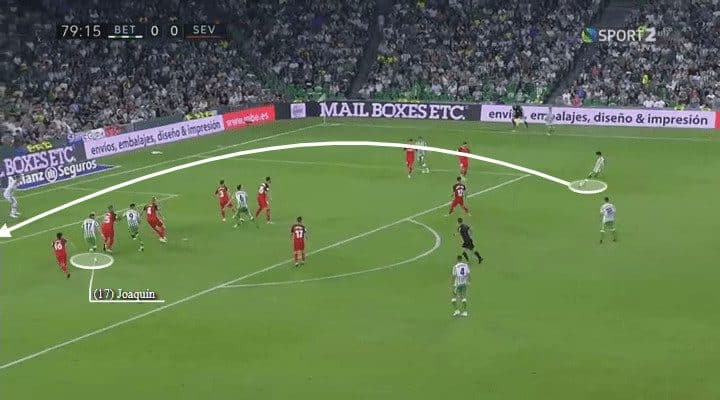
Conclusion
Quique Setién and Pablo Machín have a very similar approach to the game. They prefer to dominate possession, they want to press and win the ball in high areas and they value fast transitions, a very modern style of football. The like-for-like styles cancelled each other out for the most part and with Seville having the better players on paper, an even contest would likely have gone their way.
But it was Seiten’s Betis who showed more variance in their game, even before the red card incident. Playing over the press, having fluid movement in the opposition’s half and using a well-executed high-line offside trap gave Real Betis the overall better performance than their fierce rivals. Setién is longer in the job than Machín and has had longer to piece his side together but Sevilla will be hoping the former Girona boss will get the best out of his talented squad, less they see Quique Seiten’s side surpass them in the league for a second year running, an ominous omen for the Sevillistas.




Comments